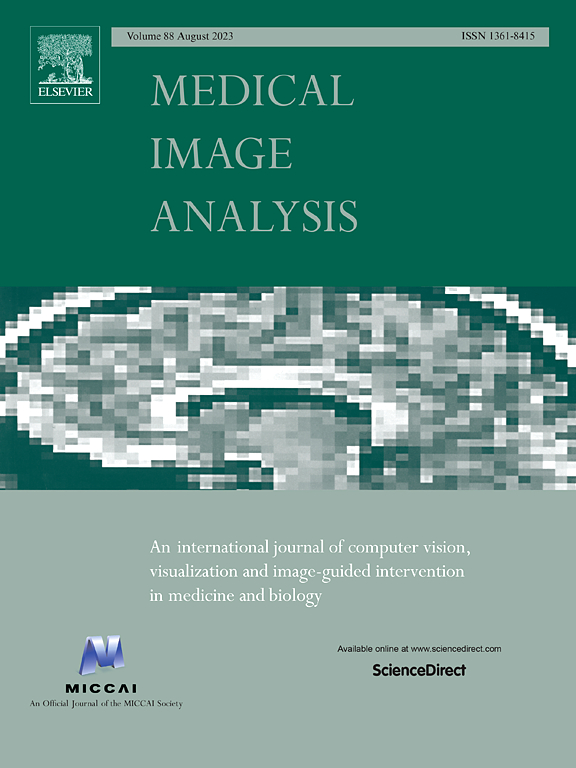PARADISE: Personalized and regional adaptation for HIE disease identification and segmentation
IF 10.7
1区 医学
Q1 COMPUTER SCIENCE, ARTIFICIAL INTELLIGENCE
引用次数: 0
Abstract
Hypoxic ischemic encephalopathy (HIE) is a brain dysfunction occurring in approximately 1-5/1000 term-born neonates. Accurate segmentation of HIE lesions in brain MRI is crucial for prognosis and diagnosis but presents a unique challenge due to the diffuse and small nature of these abnormalities, which resulted in a substantial gap between the performance of machine learning-based segmentation methods and clinical expert annotations for HIE. To address this challenge, we introduce ParadiseNet, an algorithm specifically designed for HIE lesion segmentation. ParadiseNet incorporates global–local learning, progressive uncertainty learning, and self-evolution learning modules, all inspired by clinical interpretation of neonatal brain MRIs. These modules target issues such as unbalanced data distribution, boundary uncertainty, and imprecise lesion detection, respectively. Extensive experiments demonstrate that ParadiseNet significantly enhances small lesion detection () accuracy in HIE, achieving an over 4% improvement in Dice, 6% improvement in NSD compared to U-Net and other general medical image segmentation algorithms.
求助全文
约1分钟内获得全文
求助全文
来源期刊

Medical image analysis
工程技术-工程:生物医学
CiteScore
22.10
自引率
6.40%
发文量
309
审稿时长
6.6 months
期刊介绍:
Medical Image Analysis serves as a platform for sharing new research findings in the realm of medical and biological image analysis, with a focus on applications of computer vision, virtual reality, and robotics to biomedical imaging challenges. The journal prioritizes the publication of high-quality, original papers contributing to the fundamental science of processing, analyzing, and utilizing medical and biological images. It welcomes approaches utilizing biomedical image datasets across all spatial scales, from molecular/cellular imaging to tissue/organ imaging.
 求助内容:
求助内容: 应助结果提醒方式:
应助结果提醒方式:


